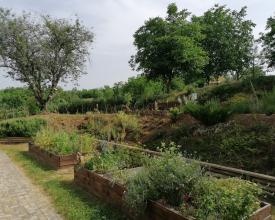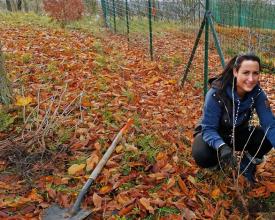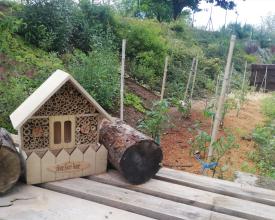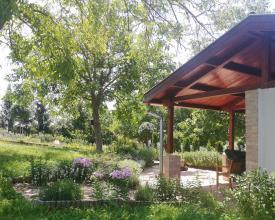Possibilities of cooperation between birds and people during farming

I run an organic farm in Romonya, where I practice chemical-free farming. I deal with herbs, medicinal plants, wild berries and fruit trees, including indigenous varieties.
Part of the farm is an extensive Bird-Nest Box Station, where I help the lives of the species that settle here with dozens of animal protection tools. Just a few examples: A,B,C,D bird boxes, nesting boxes, swallow's nestes, bird feeders, drinkers, bird baths, etc. In addition, in order to help and increase biodiversity, I also installed dozens of other species-supporting tools: bat houses, insect hotels, butterflies houses, ladybug farms, futrinka hatcheries, lirad castles, wasp garages, etc.
Thanks to this interconnected, mutually supportive system, I was able to develop a farming practice in which, with the help of birds and other animals, I not only improved the state of the ecosystem, but also made the farming sustainable and environmentally friendly, in such a way that the quantity and quality of the harvest also increased.
Context
Challenges addressed
Location
Impacts
I was able to create an animal-human relationship based on reciprocity and cooperation, which is useful and beneficial for both parties. Thanks to all of this, in recent years, species diversity and natural defenses have greatly increased, the state of the environment has improved, and farming has become not only easier, but also more effective.
Due to the increasing presence of birds, I do not use any chemicals for pest control, not even products approved for organic farming. I base it exclusively on the living community of the natural environment, and on the fact that all elements of the food chain function properly thanks to the established system. The extent and severity of the damage is decreasing every year, thanks to the growing and more diverse bird population and the active presence of pollinators.
I use intensive mulching solutions to minimize erosion and maximize precipitation conservation. I deal with weeds with sufficient awareness: I use the appropriate species as food or medicinal plants, I use the mown plants as ground cover, and I compost the other weeds (especially those that have already set seeds) in a separate device, so everything is returned to nature. As a result of the introduced practice, the species composition of the plant population in the area is many times that of the beginning, the number of species living in and around the farm also shows a multiple increase.






